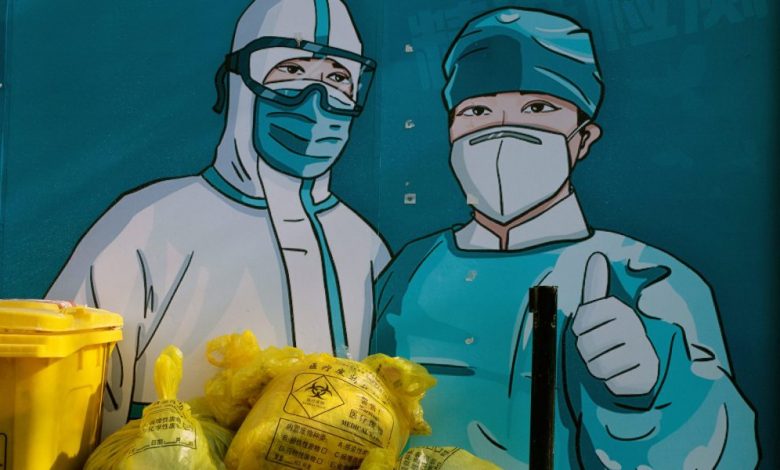China’s “millions” of new COVID cases will disrupt economic recovery

China on Wednesday announced its biggest departure from its strict COVID-zero approach, which allows some COVID patients to self-isolate at home and end testing requirements.
The changes bolster recent reports from Chinese officials that the country is entering a “new phase” in its COVID response, and confirm optimistic calls from analysts who expected mainland China to recover sooner than expected after years of isolation during the COVID era will be reopened.
On Monday, analysts at Morgan Stanley said Chinese stocks are now undervalued as the Chinese economy’s reopening looks imminent. Investors had already received the memo; They have pushed into Chinese stock markets on the back of hints from Beijing that it is preparing to relax some of the country’s tough COVID rules. Hong Kong’s Hang Seng Index is up 30% since early November. (The Hang Seng Index is still down 37% from its February 2021 peak). Both the Shanghai SSE Composite Index and the Shenzhen SZSE Component Index are up 10% since the beginning of last month.
“It’s a great opportunity to buy the dips over the next few months,” said Winnie Wu, Bank of America’s chief equity researcher for China South China tomorrow post.
But the reopening of mainland China and the inevitable COVID outbreak that will follow are likely to bring further economic disruption in the first half of next year. Despite their newfound optimism, analysts are warning of a “bumpy” economic recovery ahead.
Beijing relaxes COVID rules
For nearly three years, China has taken strict measures to contain the spread of COVID-19. Officials have imposed multiple rounds of mass testing and district-wide lockdowns to contain even a handful of cases. But rare, nationwide protests against lockdowns and constant testing in late November likely hastened Beijing’s concession that the country must move on.
On Wednesday, China introduced new rules that represent the biggest relaxation of its harsh COVID response yet. China’s State Council announced that people with mild COVID symptoms will be allowed to recover at home instead of in quarantine camps, and people will no longer need a negative COVID test to travel or enter most public places. And while lockdowns can still be imposed, officials will limit them to individual floors or buildings rather than entire neighborhoods or districts.
Some of these measures have already been implemented by local officials in cities like Shanghai, Beijing and Guangzhou where protests have been taking place. And last week, Vice Premier Sun Chunlan, China’s top official in charge of the country’s COVID response, said mainland China is in a “new phase” of the pandemic. Chinese state media had also laid the groundwork for a move away from COVID-zero Xinhuathe country’s state-controlled news agency, in an article Tuesday, that “the most difficult phase of the pandemic is over”.
When will China reopen?
Lockdowns and other COVID restrictions have weighed on China’s economy. China’s GDP grew just 3.9% year-on-year in the third quarter, below Beijing’s target of 5.5%. The country’s recent spate of COVID outbreaks and lockdowns is putting it in a deeper hole. Services activity contracted to a six-month low in November, according to the latest Caixin Services Purchasing Managers’ Index. Factory activity also contracted in November, extending the declines in October.
COVID-Null also depresses China’s export market. A hastily imposed COVID lockdown at one of Foxconn’s major iPhone factories has sparked protests and halted production. Foxconn on Tuesday said the chaos contributed to a 29% month-on-month drop in sales in November. It’s the first time ever that the manufacturer has seen a drop in monthly revenue during the all-important holiday season.
Beijing may be as concerned about the disruption to foreign manufacturers as it is about the protests, says Alicia Garcia-Herrero, chief economist for Asia-Pacific at investment bank Natixis. “China cannot afford to lose the jobs offered by foreign companies,” she says.
Ahead of Wednesday’s announcements, most investment banks have set mainland China’s exit from COVID-zero by the middle of next year. Even as it thought Chinese stocks were undervalued, Morgan Stanley stuck to an early forecast that the country would reopen by spring 2023, shifting to a regime where “extensive mandatory containment measures and large-scale COVID testing will no longer be implemented.” ‘ and many are being reversed social distancing measures.
But even before Wednesday, the country’s subtle retreat from COVID-zero had prompted some banks to revise their forecasts for a full reopening upwards — or to express more confidence in their bullish calls from earlier in the year. Goldman Sachs is forecasting a reopening in mid-2023, but puts the likelihood of an earlier reopening on Sunday at 45%, up from 30% in November.
Garcia-Herrero says China could open as soon as later this year. “We expect to be open all of 2023,” she says.
of China ‘Zigzag’ economic recovery
There is one major caveat to mainland China’s reopening: Easing restrictions will inevitably trigger a large spike in COVID cases like the country has never seen before.
Such an outbreak could be deadly, given relatively low vaccination rates among the elderly and the distribution of Chinese-made vaccines that are less effective than mRNA shots. According to official figures, only 40% of those over 80 have received a booster shot. Studies show that three doses of China’s COVID vaccines are required to provide the same level of protection against serious illness and death from the Omicron variant COVID as two doses of either Pfizer’s or Moderna’s mRNA vaccines.
China recently pledged to improve immunization rates among the elderly, which many analysts took as a sign the country is preparing to reopen.
says Garcia Herrero that China could give 70% of those over 80 third-dose boosters by the end of the year “if they really get faster,” in which case the country could open “right away.” But even in that scenario, she warns, “a lot of people would likely die.”
China could report as many as 20,000 daily deaths from COVID-19 in the spring if it reopens at its current pace, according to models from Wigram Capital Advisors, a macroeconomic advisory group.
A surge in COVID cases, whether fatal or not, will hamper China’s economy even as Beijing relaxes COVID controls. Ordinary Chinese worried about catching the coronavirus are likely to isolate and scale back consumer spending until the outbreak subsides. And those who contract COVID are staying home while they recover, lowering performance and disrupting operations. “Many people are getting sick, which could result in factories being closed or facilities being underutilized,” Zhang Zhiwei, chief economist at Pinpoint Asset Management, told the US South China tomorrow post.
Even Monday’s more optimistic Morgan Stanley research note warned of a “bumpy” recovery. There will be “sustained containment measures and possibly some zigzags in the early stages of reopening,” wrote Robin Xing, the bank’s chief economist for China.
“The combination of rising cases, easing of guidelines in some regions, the winter flu season and the approaching Lunar New Year when hundreds of millions of people normally travel makes it difficult to predict how cases, COVID restrictions and mobility will evolve in the coming months. Hui Shan, chief China economist at Goldman Sachs, wrote in a note on Sunday.
And a spate of cases could prompt public dissatisfaction against a COVID-zero phase-out from those concerned about the case spate caused by the reopening, Garcia-Herrero warns.
The public setback could lead to more volatility and slower growth in the first half of the year. Goldman Sachs forecast in November that China’s economy could grow just 2% in the second quarter of 2023, before rebounding to 10% GDP growth in the following quarter as people adjust to living with COVID.
Hong Kong’s experience earlier this year is an example of how an uncontrolled outbreak in a COVID-null area can devastate an economy. After two years of isolation and low case numbers, the semi-autonomous Chinese city suffered a massive outbreak between February and April this year. Low vaccination rates among the city’s elderly population resulted in 9,100 deaths in the first four months of the year, making the outbreak the deadliest in the developed world.
The outbreak in Hong Kong also crashed the city’s economy. GDP fell 4% in the first quarter compared to the same period last year. Consumer spending and investment also fell year-on-year by 5.5% and 8.4%, respectively.
The city has still not fully recovered. The Hong Kong government now expects the economy to contract by 3.2% in 2022.
An outbreak in mainland China that mimics that in Hong Kong would be massive given the size of the mainland. Goldman Sachs is forecasting “millions of new cases every day for a few months, which would be orders of magnitude higher than the highest number the country has ever seen.”



